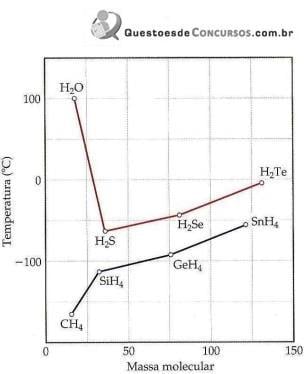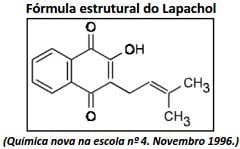Questões Militares
Para idecan
Foram encontradas 2.090 questões
Resolva questões gratuitamente!
Junte-se a mais de 4 milhões de concurseiros!
A mysterious ancient cemetery in Egypt could contain more than a million mummified human remains, archaeologists have claimed.
Around 1,700 bodies have so far been uncovered at the Fag el-Gamous (Way of the Water Buffalo) site, around 60 miles south of Cairo. But experts believe that countless more are contained in the burial ground.
“We are fairly certain we have over a million burials within this cemetery. It's large, and it's dense,” said project director Kerry Muhlestein, an associate professor in the Department of Ancient Scripture at Brigham Young University (BYU), which has been examining the site for around 30 years. They were placed there between the 1st and the 7th centuries AD, but the scale of the site has left many baffled. A nearby village has been deemed too small to warrant such a large cemetery, while the closest major settlements had their own burial grounds.
“It's hard to know where all these people were coming from,” Professor Muhlestein told Live Science.
Another interesting find was that the corpses appeared to be grouped together by hair colour, with one section containing the remains of those with blonde hair and another for those with red hair. The bodies, which included a man of more than seven feet in height, are thought to be of ordinary citizens, rather than the royalty found at many famous Egyptian sites. They were not buried in coffins, according to Muhlestein, and were in fact mummified not by design but by the arid natural environment.
“The people in the cemetery represent the common man. They are the average people who are usually hard to learn about because they are not very visible in written sources. A lot of their wealth, or the little that they had, was poured into these burials.”
His team discovered objects including glassware, jewellery and linen. The findings were presented to the Scholars Colloquim at the Society for the Study of Egyptian Antiquities in Toronto last month.
The Telegraph, London.
(http://www.traveller.com.au/mysterious-ancient-cemetery-in-egypt-could-contain-a-
million-mummies-12aaq7.)
A mysterious ancient cemetery in Egypt could contain more than a million mummified human remains, archaeologists have claimed.
Around 1,700 bodies have so far been uncovered at the Fag el-Gamous (Way of the Water Buffalo) site, around 60 miles south of Cairo. But experts believe that countless more are contained in the burial ground.
“We are fairly certain we have over a million burials within this cemetery. It's large, and it's dense,” said project director Kerry Muhlestein, an associate professor in the Department of Ancient Scripture at Brigham Young University (BYU), which has been examining the site for around 30 years. They were placed there between the 1st and the 7th centuries AD, but the scale of the site has left many baffled. A nearby village has been deemed too small to warrant such a large cemetery, while the closest major settlements had their own burial grounds.
“It's hard to know where all these people were coming from,” Professor Muhlestein told Live Science.
Another interesting find was that the corpses appeared to be grouped together by hair colour, with one section containing the remains of those with blonde hair and another for those with red hair. The bodies, which included a man of more than seven feet in height, are thought to be of ordinary citizens, rather than the royalty found at many famous Egyptian sites. They were not buried in coffins, according to Muhlestein, and were in fact mummified not by design but by the arid natural environment.
“The people in the cemetery represent the common man. They are the average people who are usually hard to learn about because they are not very visible in written sources. A lot of their wealth, or the little that they had, was poured into these burials.”
His team discovered objects including glassware, jewellery and linen. The findings were presented to the Scholars Colloquim at the Society for the Study of Egyptian Antiquities in Toronto last month.
The Telegraph, London.
(http://www.traveller.com.au/mysterious-ancient-cemetery-in-egypt-could-contain-a-
million-mummies-12aaq7.)
A mysterious ancient cemetery in Egypt could contain more than a million mummified human remains, archaeologists have claimed.
Around 1,700 bodies have so far been uncovered at the Fag el-Gamous (Way of the Water Buffalo) site, around 60 miles south of Cairo. But experts believe that countless more are contained in the burial ground.
“We are fairly certain we have over a million burials within this cemetery. It's large, and it's dense,” said project director Kerry Muhlestein, an associate professor in the Department of Ancient Scripture at Brigham Young University (BYU), which has been examining the site for around 30 years. They were placed there between the 1st and the 7th centuries AD, but the scale of the site has left many baffled. A nearby village has been deemed too small to warrant such a large cemetery, while the closest major settlements had their own burial grounds.
“It's hard to know where all these people were coming from,” Professor Muhlestein told Live Science.
Another interesting find was that the corpses appeared to be grouped together by hair colour, with one section containing the remains of those with blonde hair and another for those with red hair. The bodies, which included a man of more than seven feet in height, are thought to be of ordinary citizens, rather than the royalty found at many famous Egyptian sites. They were not buried in coffins, according to Muhlestein, and were in fact mummified not by design but by the arid natural environment.
“The people in the cemetery represent the common man. They are the average people who are usually hard to learn about because they are not very visible in written sources. A lot of their wealth, or the little that they had, was poured into these burials.”
His team discovered objects including glassware, jewellery and linen. The findings were presented to the Scholars Colloquim at the Society for the Study of Egyptian Antiquities in Toronto last month.
The Telegraph, London.
(http://www.traveller.com.au/mysterious-ancient-cemetery-in-egypt-could-contain-a-
million-mummies-12aaq7.)

Assim, para se obter a temperatura de 160°C, deve-se ajustar esse botão na posição:

Sobre essa onda, é correto afirmar que

Sobre as representações anteriores, é correto afirmar que
3’ ATGCCTATGCCAAGTCCG 5’
Desse modo, o trecho da molécula de DNA poderá sintetizar a seguinte fita de RNA:
Ponto de ebulição dos hidretos do grupo 4A e 6A em função da massa molecular.

(Química Ciência Central.)
Sobre a imagem e intensidade das forças intermoleculares, analise.
I. No geral, o ponto de ebulição de compostos de hidrogênio torna-se maior com o aumento da massa molecular, devido ao acréscimo das forças de dispersão.
II. Os compostos NH3 e HF também têm pontos de ebulição altos.
III. A ligação de hidrogênio é um tipo de atração intermolecular entre o átomo de hidrogênio em uma ligação apolar (particularmente uma ligação com F, O ou N) e um par de elétrons não compartilhado em um íon ou átomo pequeno e eletronegativo que esteja próximo (geralmente um átomo de F, O ou N em outra molécula).
Está(ão) correta(s) apenas a(s) afirmativa(s)
( ) Ao adicionar solução de fenolftaleína em um meio ácido a solução ficará incolor, pois o aumento da concentração de H+ desloca o equilíbrio.
( ) O ácido carbônico é um ácido fraco, extremamente instável, que se forma somente em equilíbrio dinâmico entre a água e o gás carbônico.
( ) Quando reagem com o zinco produzem hidrogênio gasoso.
( ) Reagem com carbonatos e bicarbonatos para produzir monóxido de carbono.
A sequência está correta em

A partir da fórmula estrutural do lapachol, analise as afirmativas.
I. Possui massa molar de, aproximadamente, 242 g/mol.
II. Possui fórmula molecular C15H14O3.
III. Possui em sua estrutura as funções orgânicas fenol e éster.
Está(ão) correta(s) apenas a(s) afirmativa(s)